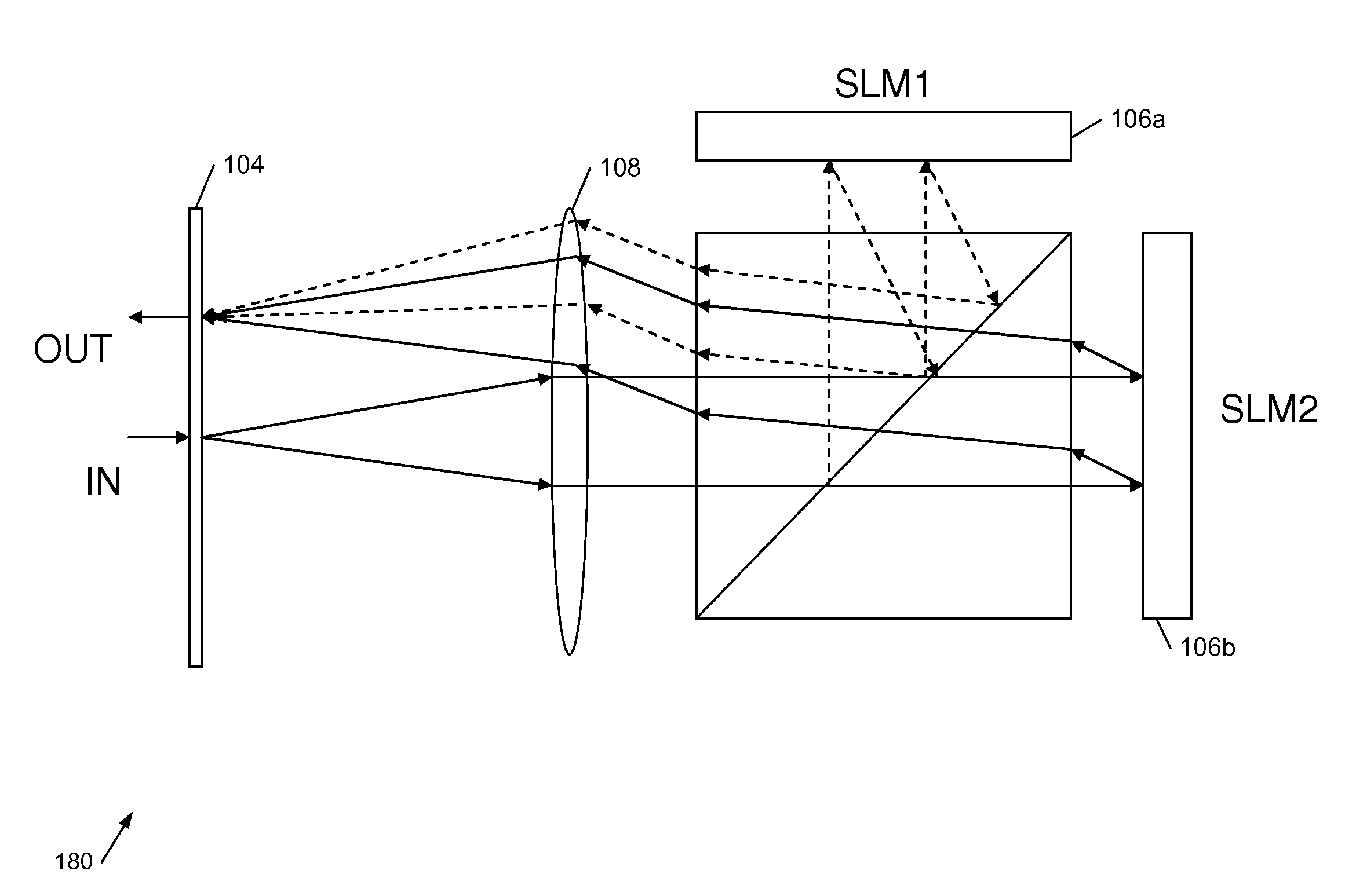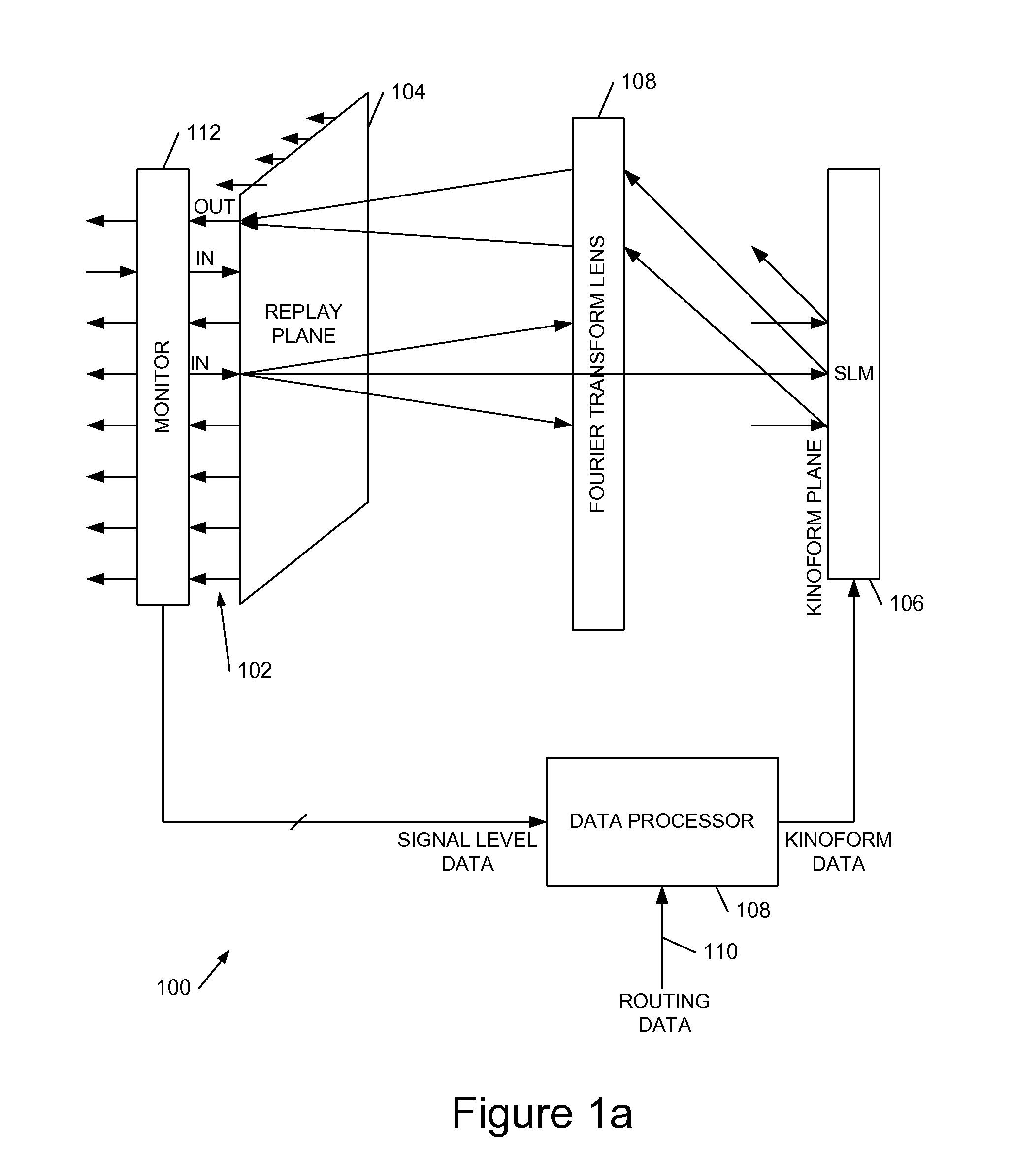Apparatus and methods for light beam routing in telecommunication
a technology of telecommunications and apparatus, applied in the direction of holographic light sources/light beam properties, holographic processes, instruments, etc., can solve the problems of difficult accurate rendition of pixel array patterns in liquid crystal, low crosstalk, and special problems of telecommunications holographic techniques, so as to achieve more rapid convergence of algorithms and increase the size of fields
- Summary
- Abstract
- Description
- Claims
- Application Information
AI Technical Summary
Benefits of technology
Problems solved by technology
Method used
Image
Examples
example implementation
[0054]Referring to FIG. 1a, this shows an embodiment of an LCOS light beam routing device 100 according to an embodiment of the invention. A fibre optic array 102 comprises one or more input fibre optics 102a and a plurality of output fibre optics 102b, with inputs and outputs in a common plane 104 (the kinoform replay plane). An LCOS SLM 106 displays a phase pattern of a kinoform and operates in a reflective mode. A Fourier-transform lens 108 is located between the replay plane 104 and kinoform / SLM 106. The SLM is driven by a data processor 108 which has an input 110 to receive routing data for selecting an optical output. The data processor in embodiments performs the calculations as described below to determine an output kinoform data for SLM 106. In embodiments one or more of the input and / or output beams may be monitored by a beam monitor 112, for example a detector array. The skilled person will appreciate that there are many monitoring techniques which may be employed includi...
PUM
| Property | Measurement | Unit |
|---|---|---|
| wavelengths | aaaaa | aaaaa |
| wavelengths | aaaaa | aaaaa |
| wavelengths | aaaaa | aaaaa |
Abstract
Description
Claims
Application Information
 Login to View More
Login to View More - R&D
- Intellectual Property
- Life Sciences
- Materials
- Tech Scout
- Unparalleled Data Quality
- Higher Quality Content
- 60% Fewer Hallucinations
Browse by: Latest US Patents, China's latest patents, Technical Efficacy Thesaurus, Application Domain, Technology Topic, Popular Technical Reports.
© 2025 PatSnap. All rights reserved.Legal|Privacy policy|Modern Slavery Act Transparency Statement|Sitemap|About US| Contact US: help@patsnap.com



